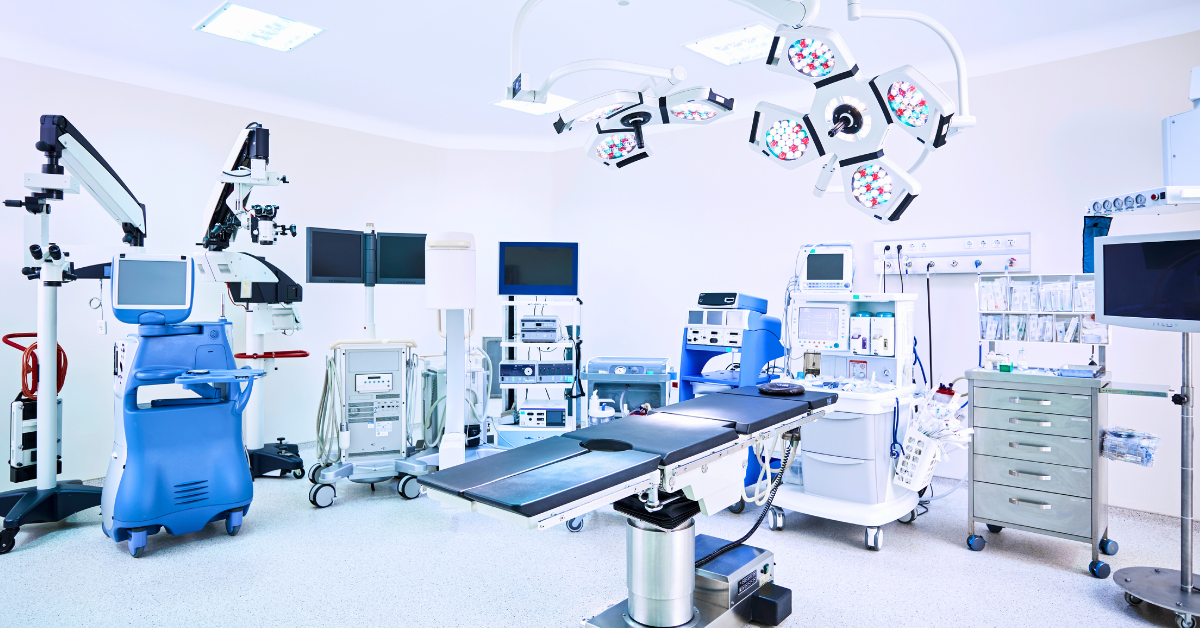Making the Switch: Why Hospitals Are Moving from RTLS to RFID
- 6 mins

In today's healthcare landscape, hospitals and health systems are actively seeking technologies that improve efficiency, reduce costs, and support patient-centered care. One area seeing a significant shift is asset tracking and management. Many healthcare organizations are transitioning from traditional Real-Time Location Systems (RTLS) and embracing Radio Frequency Identification (RFID) as a smarter, more scalable solution tailored to real-world clinical and operational needs.
RTLS vs. RFID: What's the Difference?
RTLS (Real-Time Location Systems) and RFID (Radio Frequency Identification) are location-tracking technologies but differ in infrastructure, accuracy, and cost.
RTLS typically uses active tags (with batteries) and a network of sensors and beacons —often with Wi-Fi or infrared technology—to track assets and equipment in real-time, sometimes with room-level or sub-room accuracy. These systems can be effective but require significant infrastructure, often having high installation costs, complex maintenance, limited flexibility, and constant risk of ghost assets (assets that are lost with no way to ping them once their battery dies).
RFID can utilize both active and passive tags. Unlike active RTLS, passive RFID tags, like Pycube's solution, don't require batteries and uses radio waves from readers strategically placed throughout the facility to identify tags attached to equipment. These tags don't require batteries and are read when they pass by an RFID reader. This allows facilities to set up critical checkpoints (like hallways, entrances/exits, or storage/supply areas) to monitor accurate asset movement at a fraction of the cost and complexity.
Furthermore, "tags are able to store more information per chip than a barcode, and wireless scanners have the ability to instantly identify and capture data when within scanning range." All the additional information stored on the tags allows facilities to have a more complete data analysis to refer to when making financial decisions.1
Did you know? Hospital workers struggle to locate mobile assets 15 to 20% of the time due to misplacement. This leads hospitals to buy 10 to 20% more mobile equipment than necessary for their facilities. Implementing RFID systems can help hospitals reduce their over-purchasing by making it easier to find equipment when needed, ultimately resulting in cost savings.
How RFID Supports Key Hospital Roles
1. Cost Savings
RTLS systems often require thousands of dollars in installation and infrastructure per location, whereas RFID offers a significantly lower cost per tag and minimal infrastructure needs. Hospitals can achieve meaningful tracking with a fraction of the investment and little to no input from their IT team.
2. Flexibility and Scalability
RFID tags come in various sizes and materials, allowing for versatile tracking—from wheelchairs and IV pumps to surgical trays and specimen containers. This flexibility supports both clinical and operational use cases without requiring multiple tracking systems.
3. Ease of Implementation
RFID can be introduced incrementally—starting with high-priority areas and scaling over time. This phased implementation reduces disruptions and enables faster ROI.
4. Actionable Data and Workflow Visibility
RFID solutions like Pycube's platform offer real-time dashboards for asset and specimen location, movement history, and status, providing data that informs everything from accountability and compliance tracking to resource planning.
5. Workflow Digitization
Automated tracking eliminates the need for paper logs and manual equipment checks. This streamlines workflows, reduces errors, frees up more time for healthcare providers, and ensures critical assets are available and patient-ready when needed.
RFID Use Cases by Persona
For Clinical Leaders
RFID enhances patient safety by ensuring equipment is clean, functional, and immediately available. Nurses spend less time hunting for assets and more time with patients. Automation also reduces human error and ensures compliance with safety protocols.
For Laboratory Leaders
RFID improves specimen tracking, ensuring chain-of-custody from collection to lab. This prevents loss or mislabeling, supports compliance with CAP/CLIA regulations, and shortens turnaround times for critical tests.
For Biomedical Leaders
RFID supports preventive maintenance scheduling and equipment lifecycle management. Alerts for overdue servicing and real-time location tracking reduce downtime and support regulatory audits with digitized logs.
For Operations Leaders
RFID data reveals utilization patterns, enabling smarter procurement and resource allocation decisions. Cost savings arise from fewer lost assets and overall improved workforce efficiency.
For IT & Compliance Leaders
Pycube's RFID platform offers secure data logging, audit trails, and seamless integration with existing systems (e.g., CMMS and EMR). It also supports regulatory compliance through automated tracking and documentation.
A More Efficient Future with Pycube
At Pycube, we simplify the transition from RTLS to RFID. Our intelligent platform supports asset, specimen, and supply chain tracking, compliance monitoring, maintenance scheduling, and data integration for complete visibility across facilities.
Our RFID solutions are passively powered, meaning they require no batteries and minimal maintenance. This makes them ideal for facilities of all sizes, but especially for large facilities with hundreds or thousands of tagged items.
Whether your facility tracks assets, specimens, equipment maintenance, or other hospital items, Pycube's flexible platform is designed to scale with your needs. If your hospital is considering the switch, let's talk. Contact us to learn how we can help you streamline operations and reduce costs through RFID-powered innovation.
Ready to explore the benefits of RFID in your hospital?
Resources:
- https://gkc.himss.org/resources/benefits-and-barriers-rfid-technology-healthcare
- https://pmc.ncbi.nlm.nih.gov/articles/PMC3797551/
Pycube, Inc.
Pycube offers digital solutions that provide unparalleled visibility into business operations. By digitizing and analyzing existing processes, Pycube delivers actionable insights to inform superior decision-making and enable continuous process improvements, automation, and monitoring that optimizes operational efficiencies. Our team is constantly evolving with you to ensure that we can create customized solutions that offer minimal disruption to your existing processes. Our innovative platform, software, and services not only help to increase the quality of care provided to patients but also reduce some of the daily challenges that hospital staff have meeting patient needs. In simple terms, Pycube delivers cost-effective solutions that digitize assets and spceimens, streamline workflows, and automate processes.